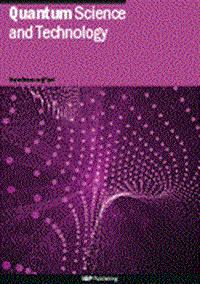集成高保真量子传感器模型和用于量子增强导航的地图匹配滤波器
IF 5
2区 物理与天体物理
Q1 PHYSICS, MULTIDISCIPLINARY
引用次数: 0
摘要
利用量子传感器的潜力来辅助导航需要使它们能够在复杂、动态的环境中运行,并将它们集成到现有的导航系统中。虽然来自平台动力学的交叉耦合通常会以复杂的方式降低量子测量,但需要设计导航滤波器来处理这种复杂的量子传感器数据。在这项工作中,我们报告了基于原子干涉的重力梯度仪的高保真模型的实现,并演示了其与地图匹配导航滤波器的集成。依靠我们的模型在各种动态平台环境中模拟传感器行为的能力,我们表明,通过使用量子重力梯度法进行地图匹配来辅助导航可以产生稳定的轨迹,并强调了由平台动力学引起的非高斯误差的重要性,这是地图匹配导航的关键挑战。我们提出了减轻这些误差的要求,例如将传感器的倾斜度保持在3.3°以下,以告知未来传感器的开发优先级。这项工作证明了端到端方法的价值,可以支持整个导航系统的未来优化。除了导航之外,我们的原子干涉仪建模框架可以与量子重力仪,梯度仪和惯性传感器的当前研究和创新工作相关。本文章由计算机程序翻译,如有差异,请以英文原文为准。
Integration of a high-fidelity model of quantum sensors with a map-matching filter for quantum-enhanced navigation
Harnessing the potential of quantum sensors to assist in navigation requires enabling their operation in complex, dynamic environments and integrating them within existing navigation systems. While cross-couplings from platform dynamics generally degrade quantum measurements in a complex manner, navigation filters would need to be designed to handle such complex quantum sensor data. In this work, we report on the realization of a high-fidelity model of an atom-interferometry-based gravity gradiometer and demonstrate its integration with a map-matching navigation filter. Relying on the ability of our model to simulate the sensor behaviour across various dynamic platform environments, we show that aiding navigation via map matching using quantum gravity gradiometry results in stable trajectories, and highlight the importance of non-Gaussian errors arising from platform dynamics as a key challenge to map-matching navigation. We derive requirements for mitigating these errors, such as maintaining sensor tilt below 3.3∘, to inform future sensor development priorities. This work demonstrates the value of an end-to-end approach that could support future optimization of the overall navigation system. Beyond navigation, our atom interferometer modelling framework could be relevant to current research and innovation endeavours with quantum gravimeters, gradiometers and inertial sensors.
求助全文
通过发布文献求助,成功后即可免费获取论文全文。
去求助
来源期刊

Quantum Science and Technology
Materials Science-Materials Science (miscellaneous)
CiteScore
11.20
自引率
3.00%
发文量
133
期刊介绍:
Driven by advances in technology and experimental capability, the last decade has seen the emergence of quantum technology: a new praxis for controlling the quantum world. It is now possible to engineer complex, multi-component systems that merge the once distinct fields of quantum optics and condensed matter physics.
Quantum Science and Technology is a new multidisciplinary, electronic-only journal, devoted to publishing research of the highest quality and impact covering theoretical and experimental advances in the fundamental science and application of all quantum-enabled technologies.
 求助内容:
求助内容: 应助结果提醒方式:
应助结果提醒方式:


